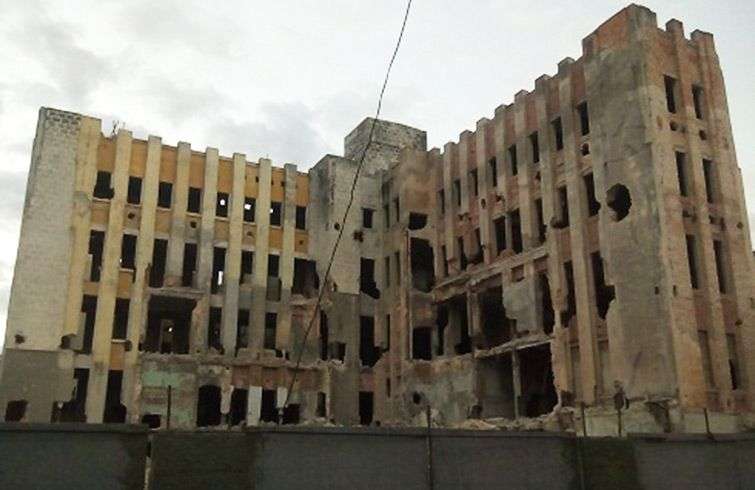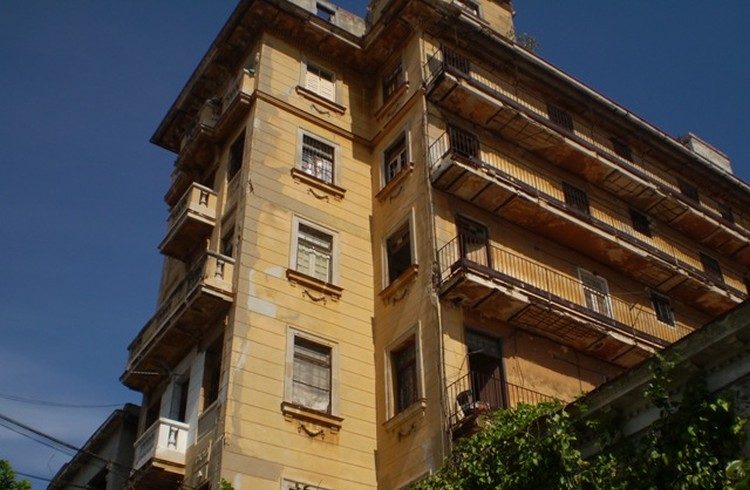In the cities there are buildings that have an autobiographical value because even when they are no longer present they survive in the collective memory. And there are works that without possessing great architectural values, eventually come to acquire a cultural value.
Such is the case of the building Alaska-bound to further development of the Havana´s La Rampa – built in 1922 and demolished just over a decade ago. About this building the architects Isabel Rigol and Angela Rojas refer in the article La Rampa. Nostalgia and rescue:
“This was no reference to modern buildings, and if analyzed with classical aesthetic categories or of rationalism, left much to be desired volumetrically. Its greatest value lay in the testimonial character, though it were a work of the twentieth century, and on top, out of fashion, but the story of what La Rampa would be started there because it was all that remained of previous image “.
About the Alaska building nestled in the corner of 23 and M, said his neighbors, half joking, half serious, that was not falling in pieces but chunks.
I lived in it my first five years and then, during adolescence, my mother and I spent several seasons at my grandmother´s. She was one of many residents who went to a shelter after that fateful day in August 2002 when the roof of an apartment collapsed and specialist said the danger of collapse was imminent.
A little history

The Alaska building, of eclectic architecture, had five floors and 50 apartments with four or five bedrooms. Some of them had become cottages. In 1978 a budget for capital repairs of the property was approved, due to its poor condition.
In the 90s, it was mentioned again the issue of budget and some residents were moved to Habana del Este. Half of the building remained occupied pending a future solution that was seeking, laboriously, a worried delegate of the constituency. She did everything possible to move all residents to a safe place but … a heart attack would not let her and then came the so-called Special Period. Meanwhile the Alaska continued slowly dying.
“Everything has a time when it is fixable. If they allow passing of time restoration is not longer worth it, from the economic point of view, “said the architect Mario Coyula, awarded the National Prize for Cultural Heritage for a Lifetime Work, shortly before his death.
Also the National Architecture Award José Enrique Fornes Bonavía expressed concern about the only property that witnessed the pre-modern stage of La Rampa:
“I would have done everything for the Alaska building not to be demolished. Of course, they should have taken measures 40 years ago when it began to deteriorate. Indeed, the building was nothing brilliant but created a framework that gave atmosphere to the place. It had a history. I believe that they acted with tranquility “.
In the aforementioned articles the architects Isabel Rigol and Angela Rojas report that “in this case would have been possible to make a mark, a memory, perhaps the sign. Something, however small, to serve as a witness of what the Alaska meant “.
In that sense is of paramount importance the contribution of professor Fornes: “The Alaska must have been preserved. Not only the facade, as has been done in other cases, but also the building which would have been cheaper. They must have changed their use, find alternative on certain floors from serious analysis. I’m sure you could have done something better than tear it down. One test of its validity was, luckily, left the basement of the building and this is still part of the block and shaping La Rampa although the building is not longer there”.
Nestled against the Cuban Institute of Radio and Television (ICRT) is not surprising then that in this building, familiar to millions of Cubans, resided renowned figures in the art world as the star Rosita Fornes, actor and broadcaster Alvaro de Insua, actor Carlos Badías, actresses Bujones Minin and Maritza Rosales, television director José Ramón Artigas and journalist Aloyma Ravelo, among other personalities of Cuban culture.
The Alaska was demolished in the summer of 2003 and, five years later, a new building to its former tenants was built on the corner of Zapata and B.
The history of the Cuban Titanic
At the intersection of 21 between C and D, also in Havana’s Vedado, the Tavel building rises. Known by the nickname of The Titanic, is known for its mix of styles closest to eclectic. It was built in the early 1940s, with 36 cores of four or five rooms.
Since 1990, its neighbors had hopes of seeing it restored when the National Assembly of People’s Power allocated a budget to repair five multifamily buildings. As in the case of El Alaska, time passed and passed … until it was declared uninhabitable in 2003 and its inhabitants were relocated elsewhere.
In 2012 the last neighbor, a journalist from Radio Progreso, left there and told me this unknown story for me. Three years later, the Tavel still has not been demolished because, as explained by the authorities that task requires a special mesh in order to protect the surrounding buildings. Meanwhile, it is suspected inside inhabit some harmful to human health insects.
The futile death of a hospital

Opposite the monument to José Miguel Gómez, on the Avenue of the Presidents between 27 and 29, gives its last throes a building which accommodated the Municipal Hospital for Children, named after 1961, Pedro Borrás Astorga, a tribute to a young doctor.
“The issue has been discussed by engineers, architects and people anxious to recover it. It is an extraordinary architectural work of Felix Ayala Cabarroca and Evelio Govantes Fuertes, a pair of renowned architects, “says Fornes who is president of the Cuban chapter of the International Council on Monuments and Sites (ICOMOS).
Erected in 1933, the Pedro Borrás was distinguished by its unique Art Deco style, reinforced concrete structure, its terrazzo floors and brick walls covered with jaimanita stones. It was the first pediatric hospital in Havana and one of the first modern hospital buildings had five hundred beds and a guard to provide health care to infants throughout the island.
As happened with the Alaska Building, the inexorable happened and the useless death of the hospital could not be avoided in time that stopped providing services in the late 1980s. In 1988, initiated the restoration work on the property using a donation made by Asturias philanthropists but apparently unforgivable mistakes were made that jeopardize the future of the building.
Among these errors were building a large tank that affected the foundations of the building and cleaning the steel weakened structures using sandblasting. Then the so-called Special Period came as a blow on the Pedro Borrás. So nearly a decade went by before the first crash occurred in one wing of the building. Then a second fell and nothing could be done: just demolish the grand building.
Only the architect Juan García dared to mention the state of the former health facility in the conference prior to the completion of XII World Congress on Art Deco held between March 14 and 21, 2013.
Two years later the Pedro Borrás is past history and in the ruins of what was this majestic building a parking will be built to provide services to all hospitals in the area.
As an epilogue
Alaska, Tavel and Pedro Borrás hospital are three buildings that marked the cityscape. With roughly architectural values they did not deserve the tragic fates they had. Today, other properties not only of the Cuban capital but throughout the island are waiting for a solution.
Opened in 1927, at the corner of 25th and G, the luxurious Palace Hotel, today apartment building, impressive building, with its ten floors and a tower of three levels that years later was embedded in three other plants were added.
It was the first reinforced concrete building built in Cuba, designed by architect Alberto Prieto. Currently, this property of eclectic style is pretty run down but has not been declared uninhabitable.
Meanwhile, maternal Hospital America Arias, situated at G Street between Linea and 9, another exponent of Art Deco and work of architects Govantes and Cobarrocas, built in 1930, was closed a few years ago about the danger of the collapse of areas of its roof.
Luckily, it seems that the deterioration of the building López Serrano (L and 13, Vedado), built in 1932 by the firm Watch and Rosich, with ten floors and four in the tower, on which itself was discussed at meetings of the XII Congress World of Art Deco, will not be irreversible despite having settling the land, interior leaks and partial collapse of the facade.
Which was considered for a while as the tallest building in the country, it seems that will not die thanks to a project presented by the architect Juan Garcia and a group of students from the Faculty of Architecture of the University of Havana in which, apparently, will be involved the Designing Company Havana. But this will be the subject of a future article.
I want to finish these notes with the phrase of one of the most influential architects of Mexican modernity. I mean Luis Barragán (Guadalajara, 1902-Mexico, DF, 1988). About the testimonial value of works constructed he said:
“Architecture has to be an object of our memory. When we evoke, when we conjure memory to make it clearer, piled associations in the same way that piled bricks to build a building. Memory is a form of architecture. “










